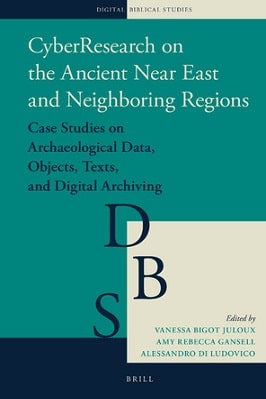
| Book Title | Cyberresearch On The Ancient Near East And Neighboring Regions |
| Book Author | Alessandro di Ludovico |
| Total Pages | 486 |
| Book Views | |
| Language | English |
| Book Download | PDF Direct Download Link |
| Get Hardcover | Click for Hard Similar Copy from Amazon |
CyberResearch on the Ancient Near East and Neighboring Regions – Case Studies on Archaeological Data, Objects, Texts, and Digital Archiving – Edited by Vanessa Bigot Juloux – Amy Rebecca Gansell – Alessandro di Ludovico
CYBERRESEARCH ON THE ANCIENT NEAR EAST AND NEIGHBORING REGIONS
Introduction to CyberResearch on the Ancient Near East and Neighboring Regions Bigot Juloux et al.
No longer does digital research impact only scientific and technical studies. It is now established as a powerful approach for revealing new information and supporting new interpretations in the humanities.
Disciplines such as Archaeology, Anthropology, Art History, History, Philology, and Literary Studies have begun to benefit.
Today more and more researchers of the ancient Near East, neighbouring regions, and other ancient-world domains extend their traditional investigations by using digital technologies as standard and experimental tools.
However, because digital research is a relatively new approach, the space dedicated to cyber-research in the humanities, especially in the study of the ancient world, is still limited and in many cases relegated to quite isolated con-texts, such as specialized research centres, congresses, and conference sessions.
Furthermore, until recently, critical discussions have been lacking among practitioners across projects and disciplines, and communication between cyber-researchers and traditional humanists remain inadequate.
As a result, the many significant cyber-research projects that have been conducted are little known outside of specialized circles, even when their impact is relevant to the traditional humanities.
Thus, a true debate about cyber-research projects and their results, impact, and potential is still missing.
Because of the great value and potential of cyber-research to the humanities overall, we hope to see its further integration into the mainstream.
But if the digital humanities (dh) continue to grow along a specialized, independent trajectory, the humanities could suffer a division between digital and non-digital projects and practitioners.
As a result, dh contributions to the study of human culture could become more and more inaccessible to non-dh scholars.
The use of jargon and specialized digital tools (such as software and programming languages) in dh research can impede the accessibility of dh projects to non-dh scholars. However, this volume is dedicated to broadening the understanding and accessibility of dh research tools, methodologies, and results.
In an effort to build bridges among dh projects, methods, and researchers, and to invite non-digital practitioners to follow the processes and results of dh research, we have attempted to make all papers in this volume meaningful and
To read more about the Cyberresearch On The Ancient Near East And Neighboring Regions book Click the download button below to get it for free
Report broken link
Support this Website
Click here to join our Telegram group for new Books